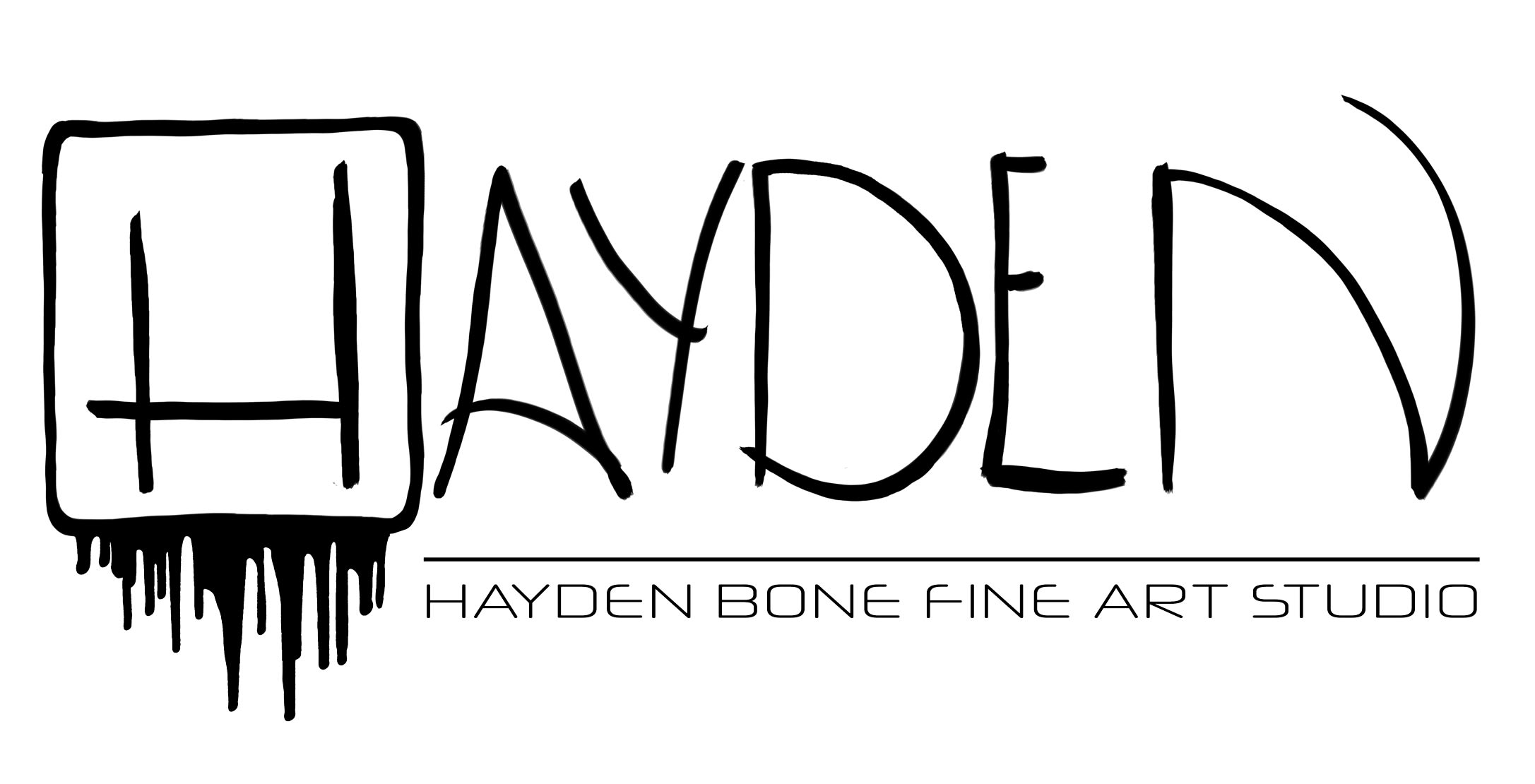
Football, often called “the beautiful game,” has a rich history not only on the field but also in its visual representations. Posters have played a crucial role in capturing the excitement of matches, promoting tournaments, and reflecting the changing artistic and cultural trends of each era. From the early 20th century to the present day, the evolution of football poster design tells the story of both the sport and its audience.
The Early Years: The Birth of the Football Poster (1900s–1930s)
In the early 1900s, as football's popularity surged, so did the need for promotional materials. The earliest posters in football poster evolution were heavily influenced by the Art Nouveau movement, characterized by ornate detail and expressive illustrations. These early posters combined artistic flair with promotional appeal, capturing the growing excitement surrounding the sport. Artists like Jules Chéret, often referred to as the father of the modern poster, played a pivotal role in shaping early advertising. While Chéret's work was not exclusively focused on football, his dynamic compositions set a standard that influenced early sports branding history.
The interwar period saw a shift towards minimalism in poster design. The German Plakatstil, or “poster style,” emerged, favoring simplicity, bold typography, and flat colors. This approach contrasted the decorative styles of the past, focusing instead on clear and direct communication. Ludwig Hohlwein, a prominent figure in this movement, created posters that were both striking and functional, capturing the essence of football with minimal detail. His work often featured strong contrasts and a focus on the athlete's form, conveying motion and energy with simplicity.
In the 1920s, the rise of the Art Deco movement brought a geometric and streamlined aesthetic to poster design. This influence extended to football posters, which adopted its sleek and modern approach.
While some football posters embraced Art Deco’s structured forms, others retained a painterly quality. A prime example is the iconic football poster for the 1930 World Cup in Uruguay, designed by Guillermo Laborde, which combined stylized imagery with dynamic motion, encapsulating the tournament’s excitement.
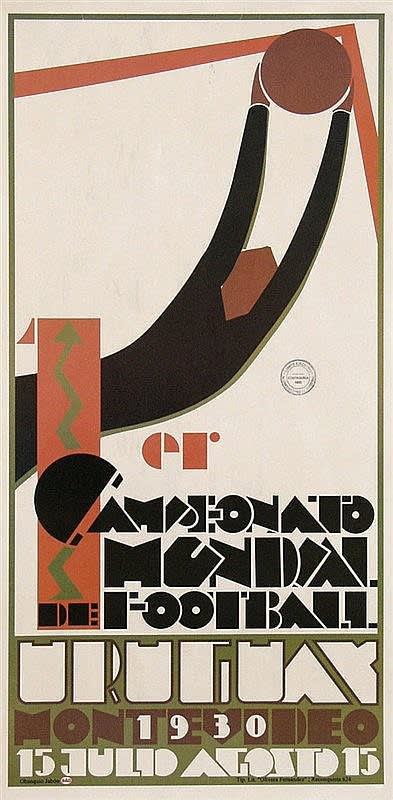
1930 world cup, Uruguay, Guillermo Laborde
As true collector’s items, these posters not only captured the beauty of the sport but also documented football’s rise to global prominence.
Mid-Century Modernism and Commercialization (1940s–1970s)
After World War II, football symbolized hope and unity, and this optimism was vividly reflected in the era’s football posters. These designs often depicted joyful scenes, vibrant colors, and community gatherings, reinforcing the sport’s role in bringing people together.
With football’s booming popularity, football-themed marketing became increasingly commercialized, with posters promoting not just matches but also related products and services. The 1950s and 60s saw the rise of Swiss-influenced typography and flat design, favoring clean layouts and sans-serif fonts. This modernist approach brought clarity and energy to football advertising while maintaining a strong sense of movement.
The 1958 World Cup poster from Sweden embraced a clean, structured layout, reflecting the era’s growing emphasis on clarity and visual impact. Posters from this period also began to incorporate national symbols and colors, evoking a sense of pride and identity among fans. Meanwhile the 1962 Chilean World Cup poster by Galvarino Ponce reflected contemporary interests in space exploration, depicting a football orbiting Earth.
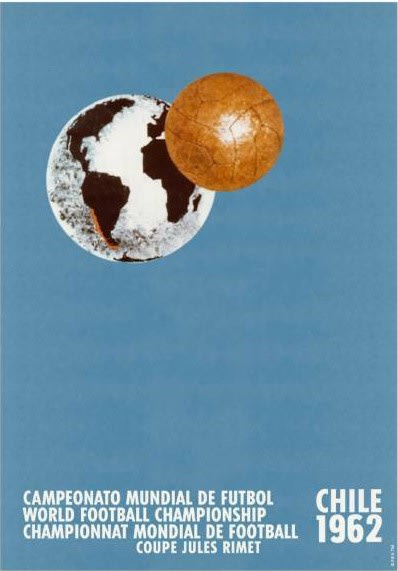
1962 world cup, Chile , Galvarino Ponce
This trend toward bold, visually striking design reached new heights with the 1970 FIFA World Cup poster in Mexico, one of the most iconic football posters of all time. Featuring abstract shapes and a vibrant color scheme, it captured the excitement of international football while embracing the era’s psychedelic and geometric design influences.
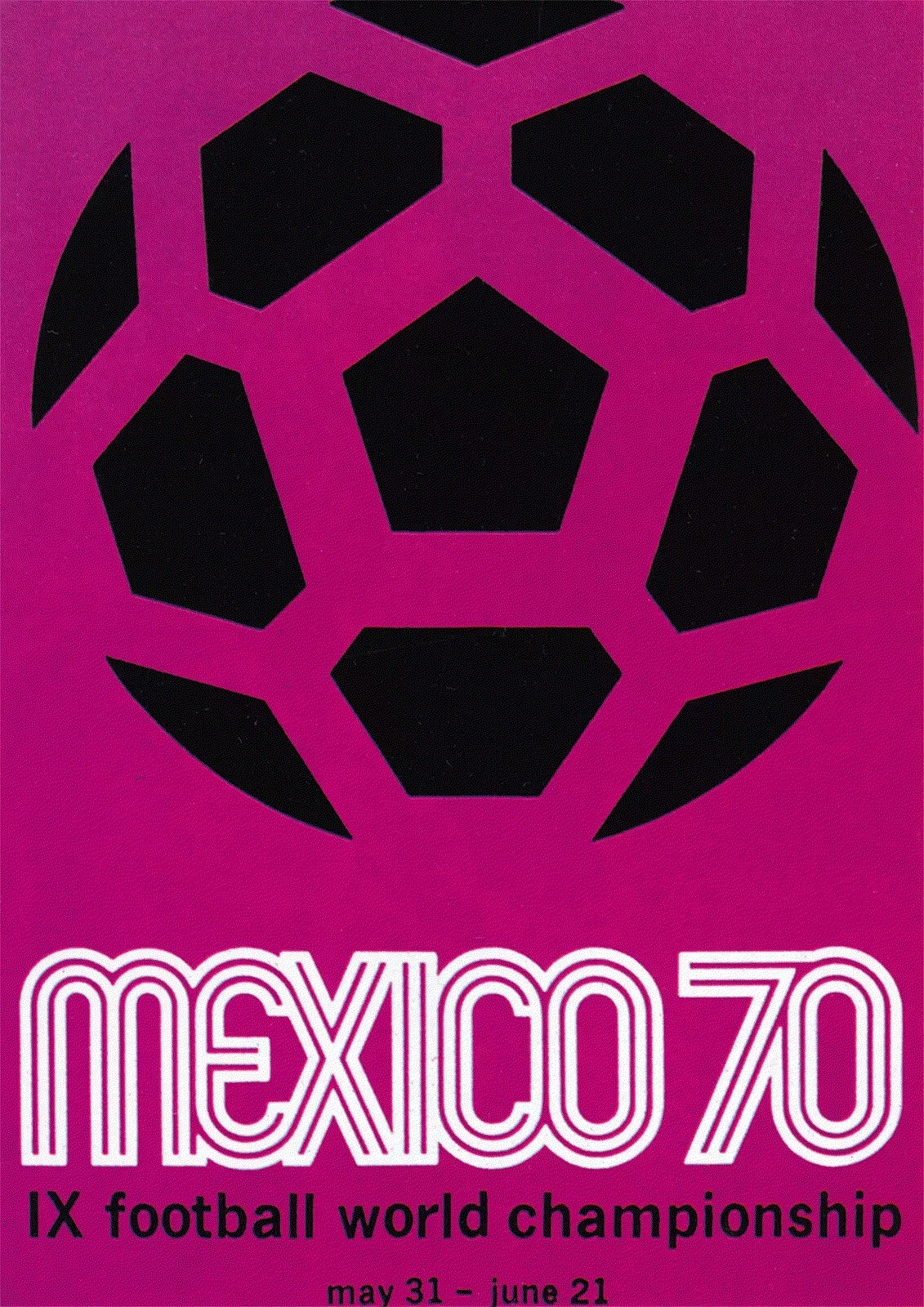
1970 world cup, Mexico, Lance Wyman
This period also saw the growing integration of photographic elements, merging realism with graphic design to create visually compelling football posters that reflected the sport’s increasing global appeal.
The Digital Age and Experimental Design (1980s–2000s)
As printing and digital design technology advanced, modern football graphics became more experimental and varied in style and technique. The 1982 Spain World Cup poster, designed by Joan Miró, broke from tradition with its vibrant and surreal depiction of a Spanish fiesta, bringing life and energy to the game.
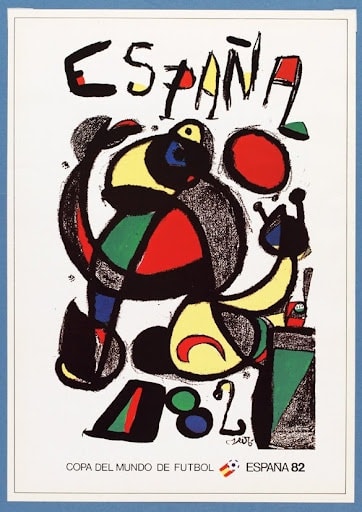
1982 world cup, Spain, Joan Miró
The 1980s and 90s saw a fusion of traditional graphic design with emerging digital techniques. Some posters embraced an urban aesthetic, incorporating photomontage, graffiti-inspired elements, and collage to reflect the grassroots passion surrounding the sport. The 1990 Italy World Cup poster introduced a sculptural, textured aesthetic, using abstract forms to convey movement and depth. This approach added a layer of dynamism and artistic sophistication to football poster design.
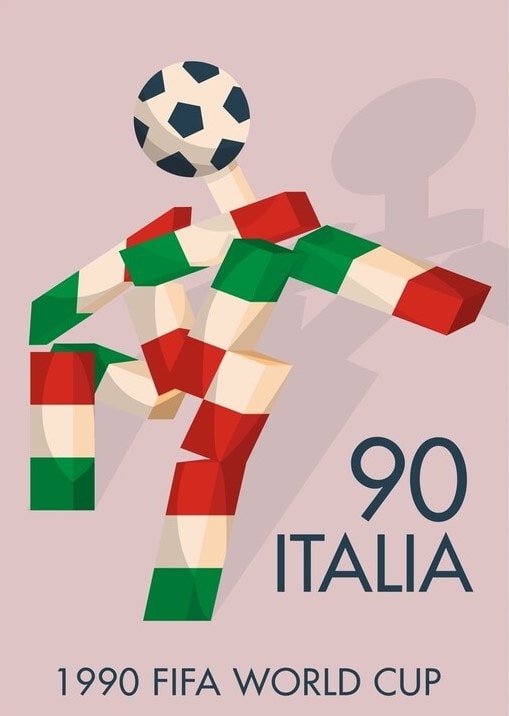
1990 world cup, Italy, Azzurro
By the 2000s, as digital tools became more sophisticated, football posters reflected commercial aesthetics. Football posters increasingly featured famous players in action shots, backed by dramatic lighting and sleek typography. Major clubs and tournaments began working with top designers to shape sports branding history, helping define the visual identity of each event with cutting-edge design.
Today: Digital Design, a Return to Retro and Global Appeal (2010s–Present)
In recent years, digital technology has revolutionized poster design, allowing for intricate graphics and a blend of styles. The 2010 South Africa World Cup poster featured a colorful depiction of a player heading a ball, symbolizing unity and celebration.
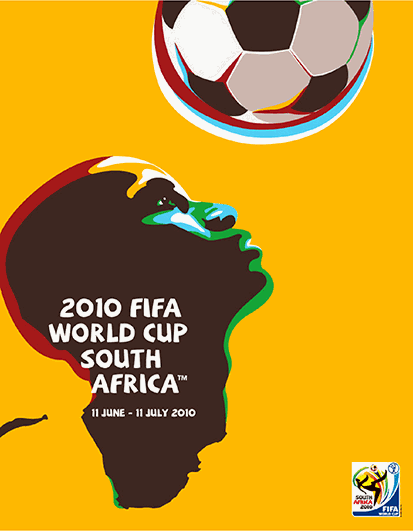
2010 world cup, South Africa, Gaby de Abreu
In parallel, there has been a resurgence of retro football designs, blending nostalgia with contemporary aesthetics. Many artists and studios, like Hayden Bone Studio, are bringing back hand-painted compositions and textured prints in football artwork that pays homage to classic football match ads while maintaining a fresh feel. Works like We All Follow #4, Saka #2, and Rice #3 embody a contemporary style.
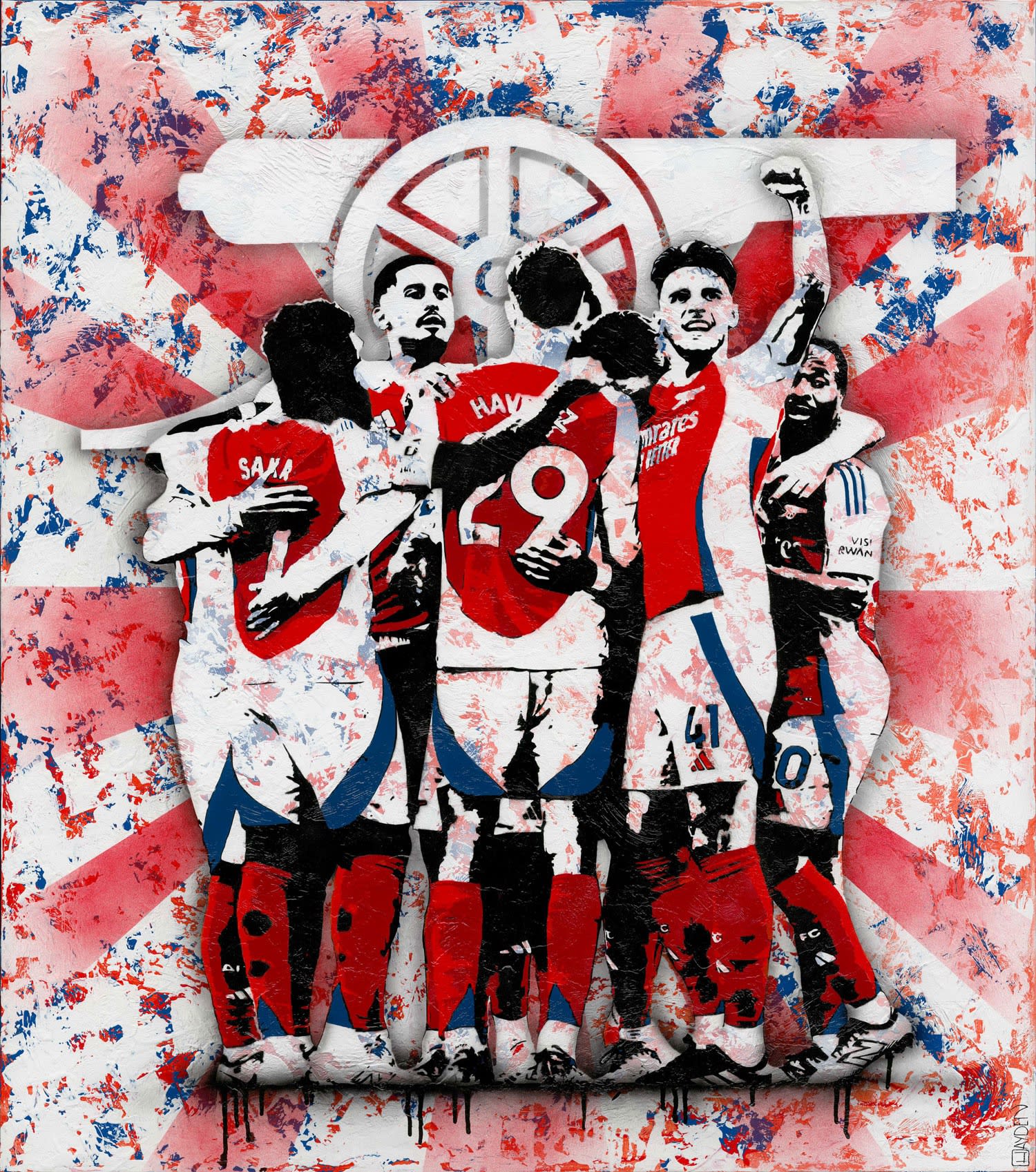
Hayden Bone, We all follow #4, 2024
With the rise of digital art, football posters are no longer just for stadium walls—they’ve become highly collectible and widely shared online. Limited-edition prints, social media graphics, and NFT-based artworks are redefining the way football-themed marketing is approached, making poster design an essential part of the sport’s cultural identity.
The design of football posters has come a long way, mirroring the sport’s journey and the world’s changing artistic and cultural landscapes. From ornate hand-drawn illustrations to sleek, digital compositions, these posters not only promote events but also encapsulate moments in time. They reflect the spirit and passion of football across generations, making them an essential part of the sport’s legacy.
